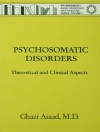<p><strong>HIGHLY COMMENDED by the BMA Medical Book Awards for Neurology!</strong></p><p><strong><cite>Neurosonology and Neuroimaging of Stroke: A Comprehensive Reference</cite></strong></p><p>Neurosonology is a first-line modality in the diagnosis and management of cerebrovascular disease and especially of stroke. In this new edition of Neurosonology and Neuroimaging of Stroke, this noninvasive, realtime imaging method has been given expanded coverage, particularly for its clinical utility.</p><p>As in the first edition, the new edition offers both a clear overview of the principles of neurosonology and a casebook exploring critical cerebrovascular problems. Ultrasound anatomy, technical aspects of clinical application, and the advantages and limitations of ultrasound are reviewed and contrasted to conventional, magnetic resonance, and computed tomography angiography. Forty-five selected cases from the authors’ extensive collections at Charite – Universitatsmedizin Berlin and the Center of Neurology in Bad Segeberg, Germany, are then discussed. The patient histories and working diagnoses are followed by detailed assessments of the extra- and intracranial color-coded duplex sonographic findings and additional diagnostic procedures. The relevant clinical aspects are presented in a compact, comprehensible way, and for the majority of the cases videos are available in the Thieme Media Center, providing further in-depth understanding of the full potential of the method.</p><p><strong>Features:</strong></p><ul><li>Complete extra- and intracranial arterial and venous ultrasound examination</li><li>New techniques: ultrasound fusion imaging, ultrafast ultrasound, contrast application</li><li>More than 1, 300 high-quality illustrations, including full-color duplex images</li><li>Fifteen newly selected cases on conditions such as subarachnoid hemorrhage and dural fistula, as well as rare stroke causes including sickle cell disease and reversible cerebral vasoconstriction syndro
İçerik tablosu
<p><strong>Part A Principles and Rules</strong><br>1 Flow and Ultrasound Basics<br>2 Vascular Anatomy and Structure of Ultrasound Examination<br>3 Intracranial Hemodynamics and Functional Tests<br>4 Pathogenesis of Stroke<br>5 Vascular Pathology<br>6 Angiographic Techniques in Neuroradiology<br><strong>Part B Case Histories</strong><br>Case 1 Right Extracranial Internal Carotid Artery Stenosis<br>Case 2 Free-floating Thrombus of the Left Internal Carotid Artery<br>Case 3 Left Common Carotid Artery Occlusion<br>Case 4 Left Temporal Arteriovenous Malformation<br>Case 5 Left M1 Middle Cerebral Artery Stenosis<br>Case 6 Left P2 Posterior Cerebral Artery Stenosis<br>Case 7 Cerebral Circulatory Arrest<br>Case 8 Basilar Artery Occlusion in Bilateral Intracranial V4 Vertebral Artery Stenosis<br>Case 9 Moyamoya Disease<br>Case 10 Thrombolysis of M1 Middle Cerebral Artery Occlusion<br>Case 11 Secondary Occlusion in Left-sided Extracranial Internal Carotid Artery Dissection<br>Case 12 Extracranial Bilateral Internal Carotid Artery and Right Vertebral Artery Occlusion, and Left Vertebral Artery Stenosis<br>Case 13 Right Internal Carotid Artery Stenosis in Fibromuscular Dysplasia and Granulomatosis with Polyangiitis (formerly Wegener’s Granulomatosis)<br>Case 14 Isolated Left Carotid Siphon Stenosis<br>Case 15 Near-occlusion of the Right and High-grade Stenosis of the Left Extracranial Internal Carotid Artery<br>Case 16 Giant Cell Arteritis with Bilateral Intracranial V4 Vertebral Artery Stenosis<br>Case 17 Ascending Left Middle Cerebral Artery Occlusion in an HIV-positive Patient<br>Case 18 Traumatic Bilateral Internal Carotid Artery Dissection with Right-sided Embolic Middle Cerebral Artery Occlusion<br>Case 19 Bilateral Extracranial Vertebral Artery Dissection with Distal Occlusion of the Right Vertebral Artery<br>Case 20 Right Internal Carotid Artery Dissection with Fast Recanalization<br>Case 21 Mid-basilar Artery Occlusion Due to Intracranial Dissection<br>Case 22 Right Mid-part M1 Middle Cerebral Artery Occlusion with Prominent Early Temporal Branch and Patent Foramen Ovale<br>Case 23 Takayasu’s Arteritis with Right-sided Subclavian Steal<br>Case 24 Dissection of the Right Extracranial Internal Carotid Artery and Left M1 Middle Cerebral Artery<br>Case 25 Progressive Right M1 Middle Cerebral Artery Occlusion Treated with Extracranial–Intracranial Bypass Surgery<br>Case 26 Extracranial Left Vertebral Artery Dissecting Aneurysm following Basilar Artery Stenting<br>Case 27 Diffuse Cerebral Angiomatosis<br>Case 28 Subclavian Steal in Left Subclavian Artery and Right Internal Carotid Artery Occlusion Leading to Extracranial–Intracranial Bypass Surgery<br>Case 29 Cerebral Venous Thrombosis<br>Case 30 Multilocular Extra- and Intracranial Stenoses and Occlusions<br>Case 31 Dissection of the Left Internal Carotid Artery C6 Segment<br>Case 32 Right Temporal Hemorrhage in Pial Arteriovenous Malformation<br>Case 33 Subarachnoid Hemorrhage after Rupture of Left Supraophthalmic Internal Carotid Artery Aneurysm<br>Case 34 Right-sided Occipital Dural Arteriovenous Fistula<br>Case 35 Left Distal Vertebral Artery Occlusion and Right Vertebral Artery Hypoplasia with Retrograde Basilar Artery Flow<br>Case 36 Postpartum Angiopathy (Reversible Cerebral Vasoconstriction Syndrome)<br>Case 37 Left Anterior Choroidal Artery Infarction in Left Supraophthalmic Internal Carotid Artery Occlusion<br>Case 38 Left-sided Amaurosis in Left Central Retinal Artery Occlusion<br>Case 39 Combined Chronic Right-sided Extracranial Internal Carotid Artery and Middle Cerebral Artery Occlusion<br>Case 40 Left Internal Carotid Artery Occlusion and Ipsilateral Arteriovenous Malformation in Inflammatory Bowel Disease<br>Case 41 Right Internal Carotid Artery as the Remaining Patent Brain-supplying Artery<br>Case 42 Left Internal Carotid Artery Aplasia as an Incidental Diagnosis in Optic Neuritis in Lupus Erythematosus<br>Case 43 Sickle Cell Disease<br>Case 44 Transient Global Amnesia with Left Hippocampal Diffusion-weighted Lesion and Asymptomatic Right Middle Cerebral Artery Infarction in High-grade Right M1 Stenosis<br>Case 45 Bilateral Proximal Vertebral Artery Stenosis and Bilateral Middle Cerebral Artery Aneurysm</p>












